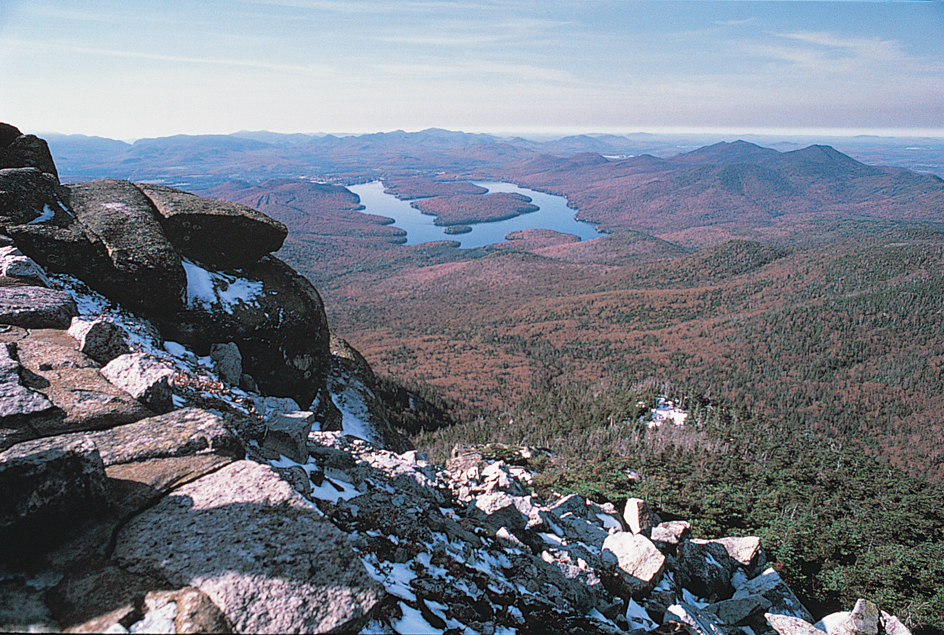Adirondack << `ad` uh RON dak, >> Mountains, are a group of mountains that cover about 12,000 square miles (31,000 square kilometers) in northeastern New York. Millions of tourists, hikers, and sports enthusiasts are drawn every year to the Adirondacks for their beautiful scenery, wildlife, and recreational opportunities.

More than 40 of the Adirondack Mountains rise above 4,000 feet (1,220 meters). Mount Marcy, at 5,344 feet (1,629 meters), is the highest point in New York. There are more than 2,300 lakes and ponds in the region. Lake George and Lake Placid are the region’s most famous resort areas. Lake Champlain lies in a broad lowland to the east of the mountains.
The mountains were formed when powerful geological forces lifted Earth’s crust more than a billion years ago. Glaciers later created most of the area’s lakes. The Adirondack Park consists of 6 million acres (2.4 million hectares) of public and private lands. The 21/2 million acres (1 million hectares) of public land makes up the largest wilderness preserve in the eastern United States. The word Adirondack comes from the Iroquois Indian word for bark eater. The Iroquois may have used the term to describe the neighboring Algonquin Indians.
